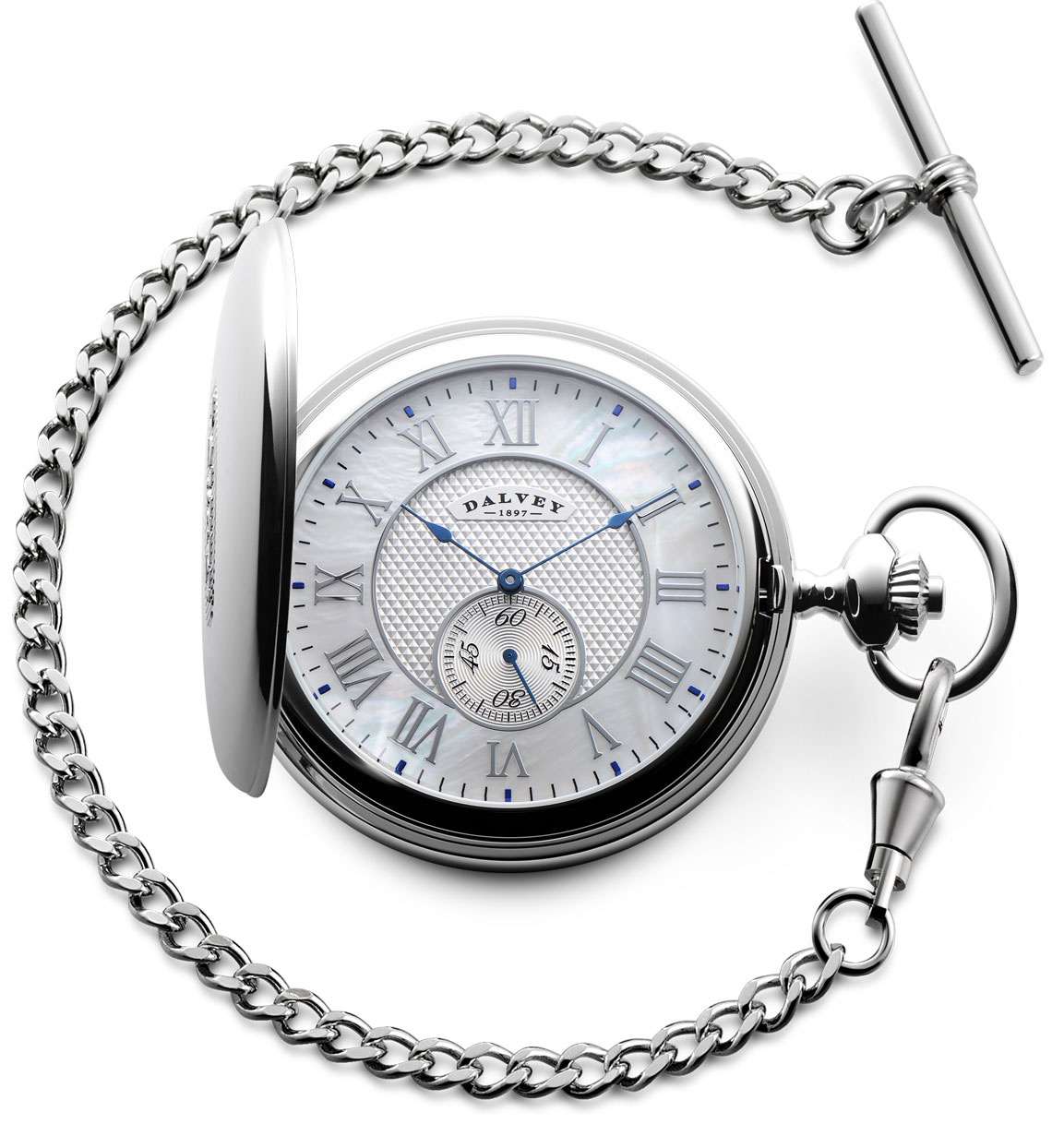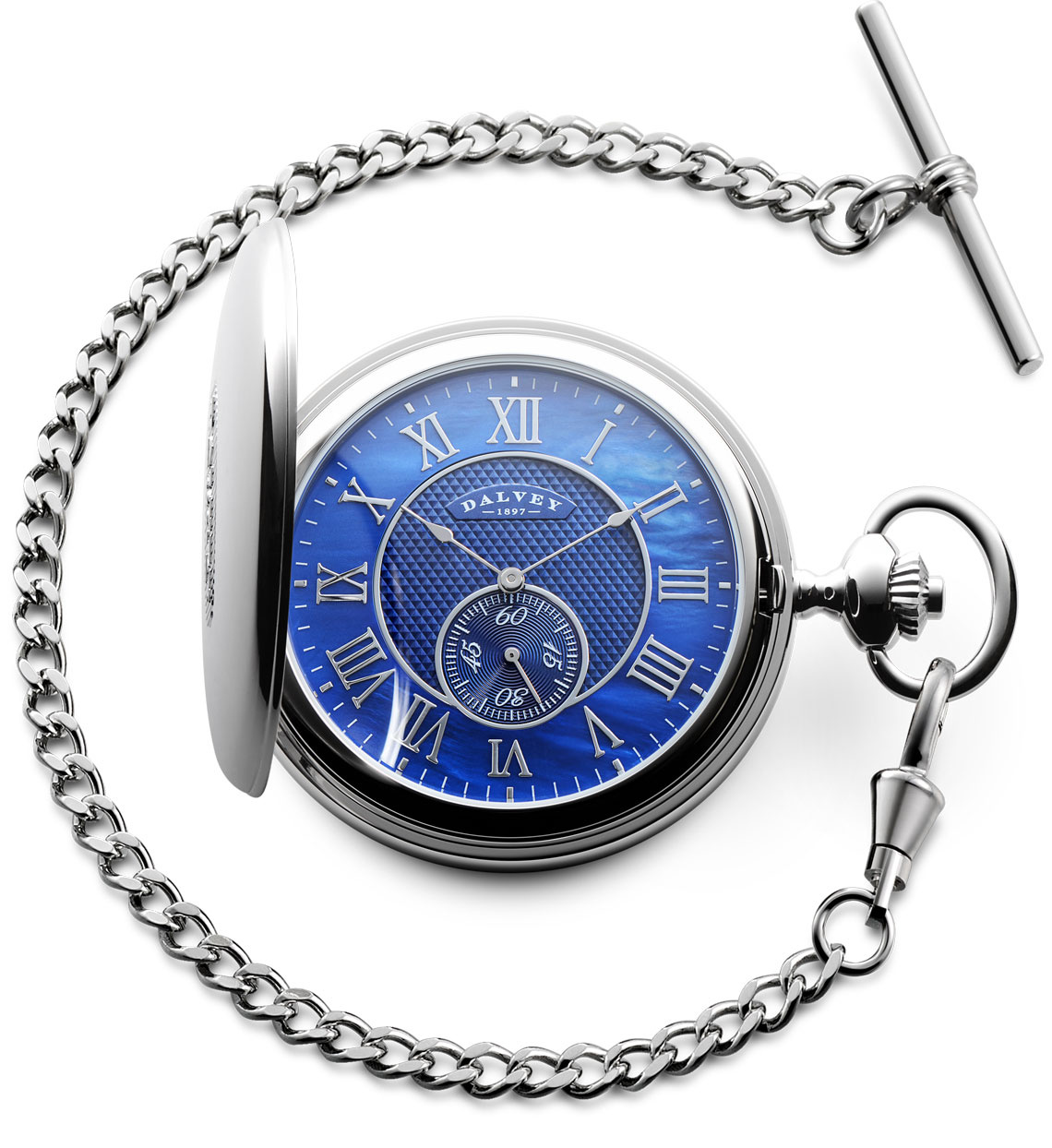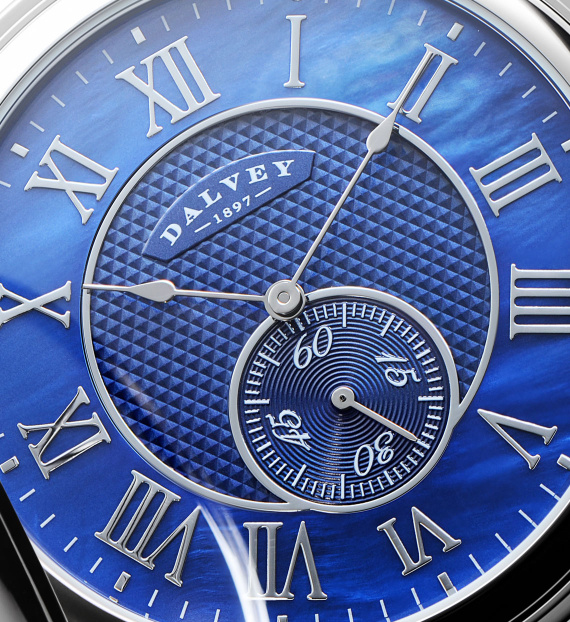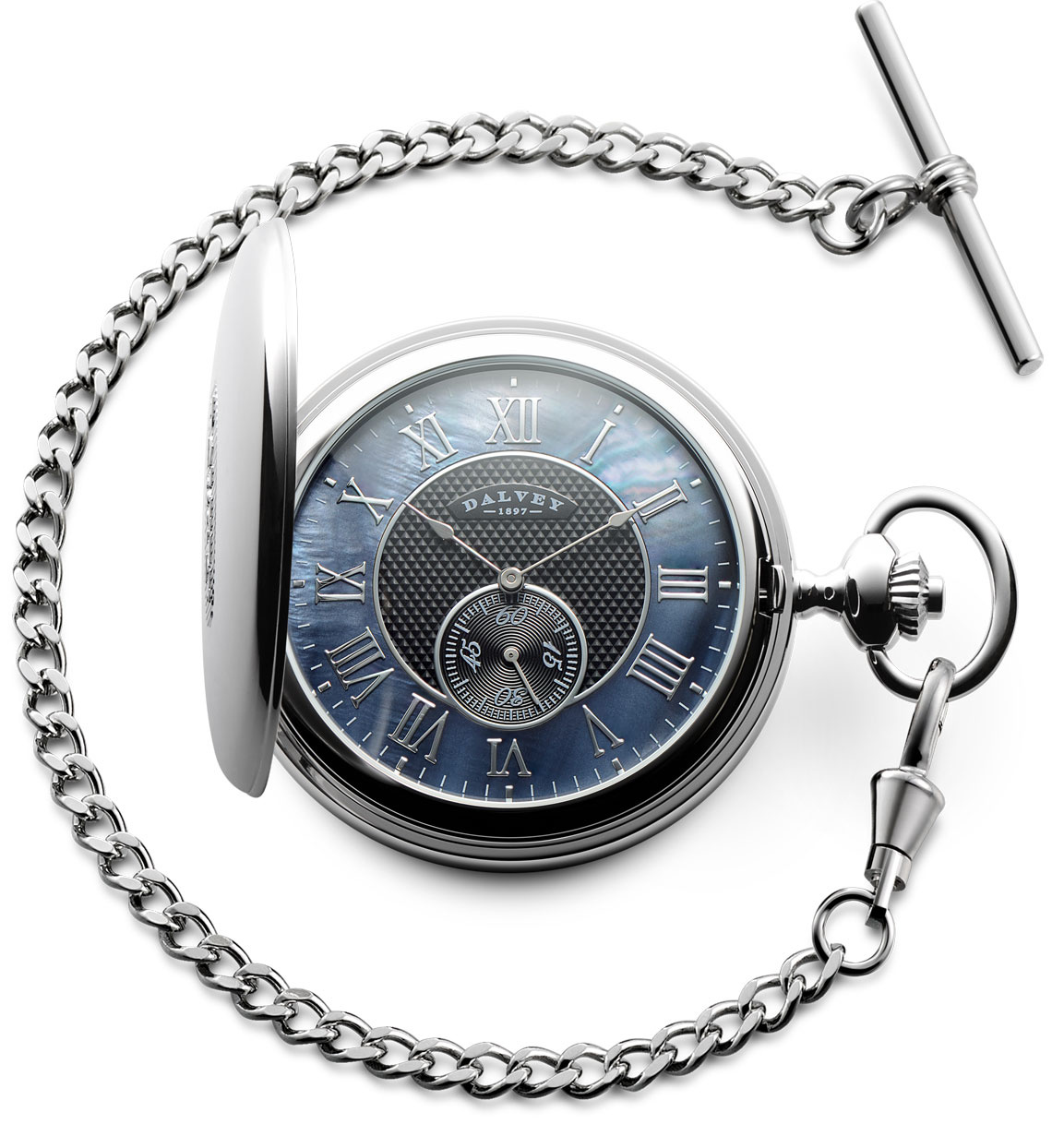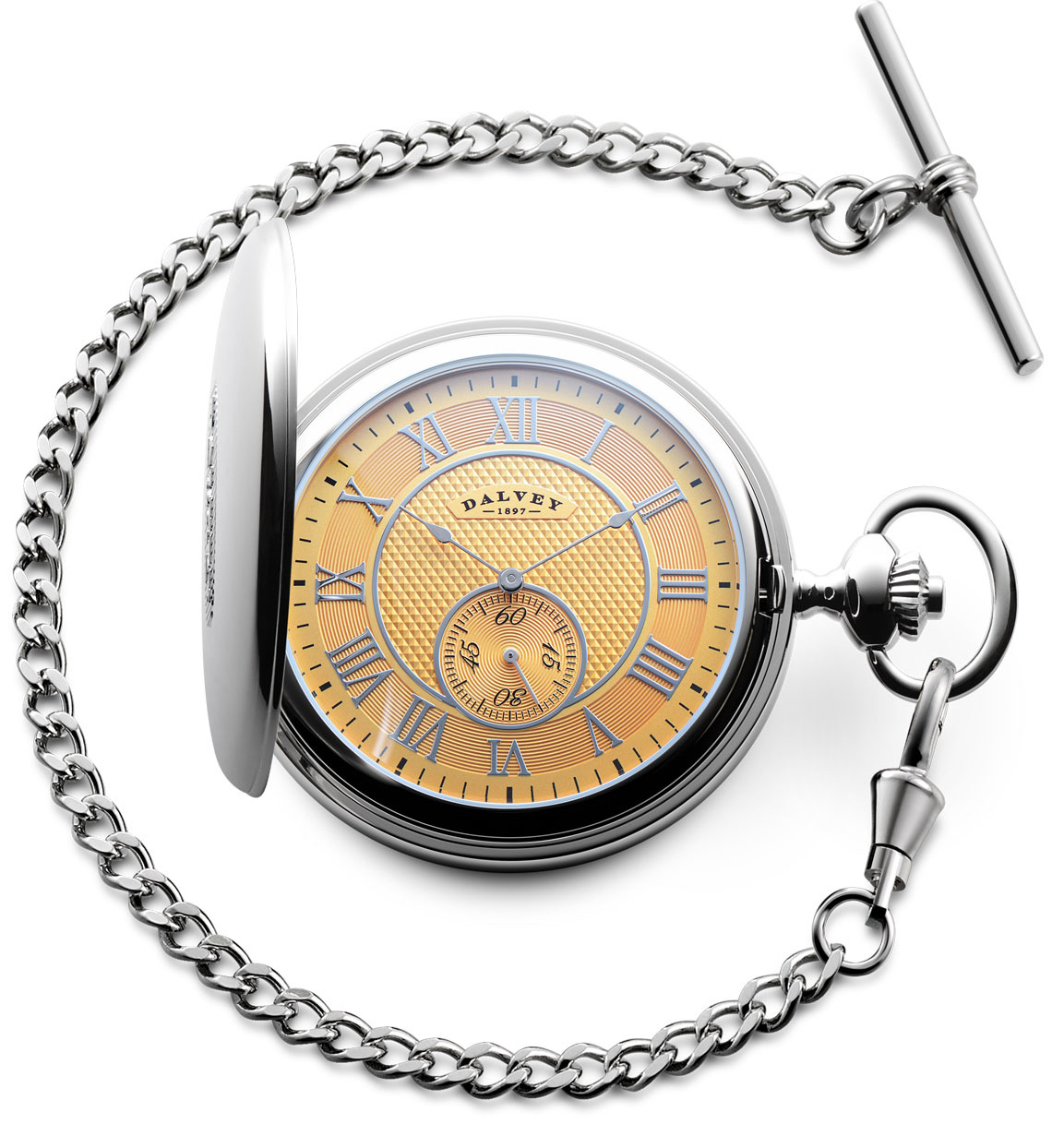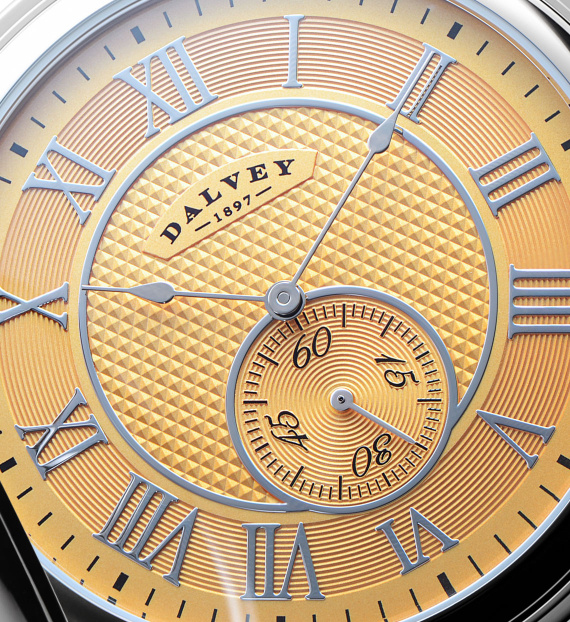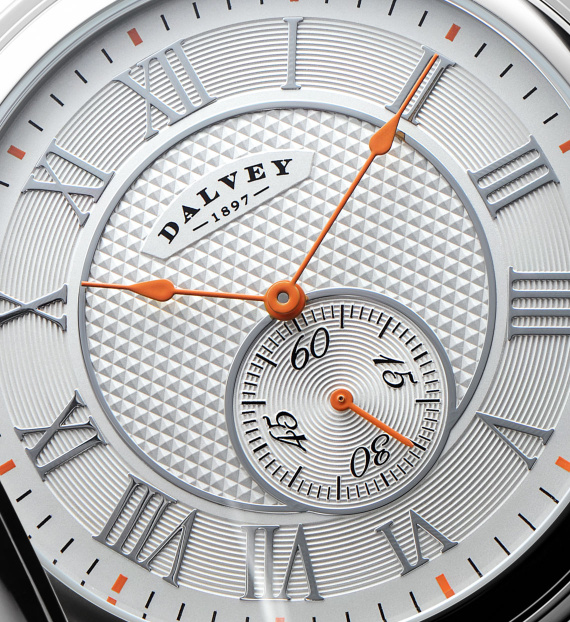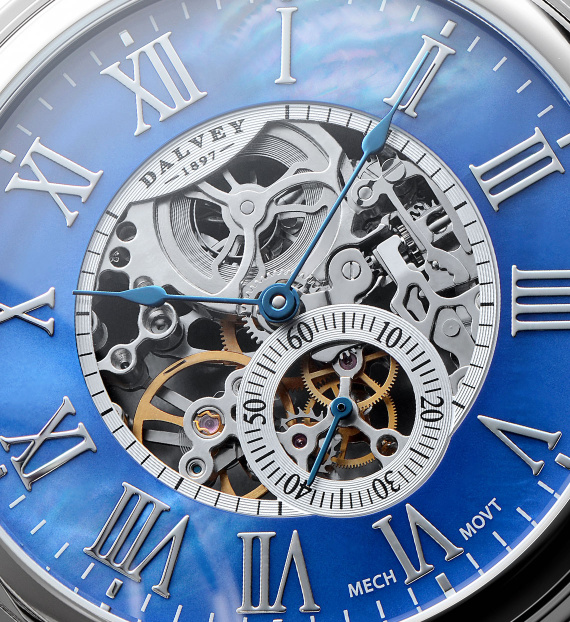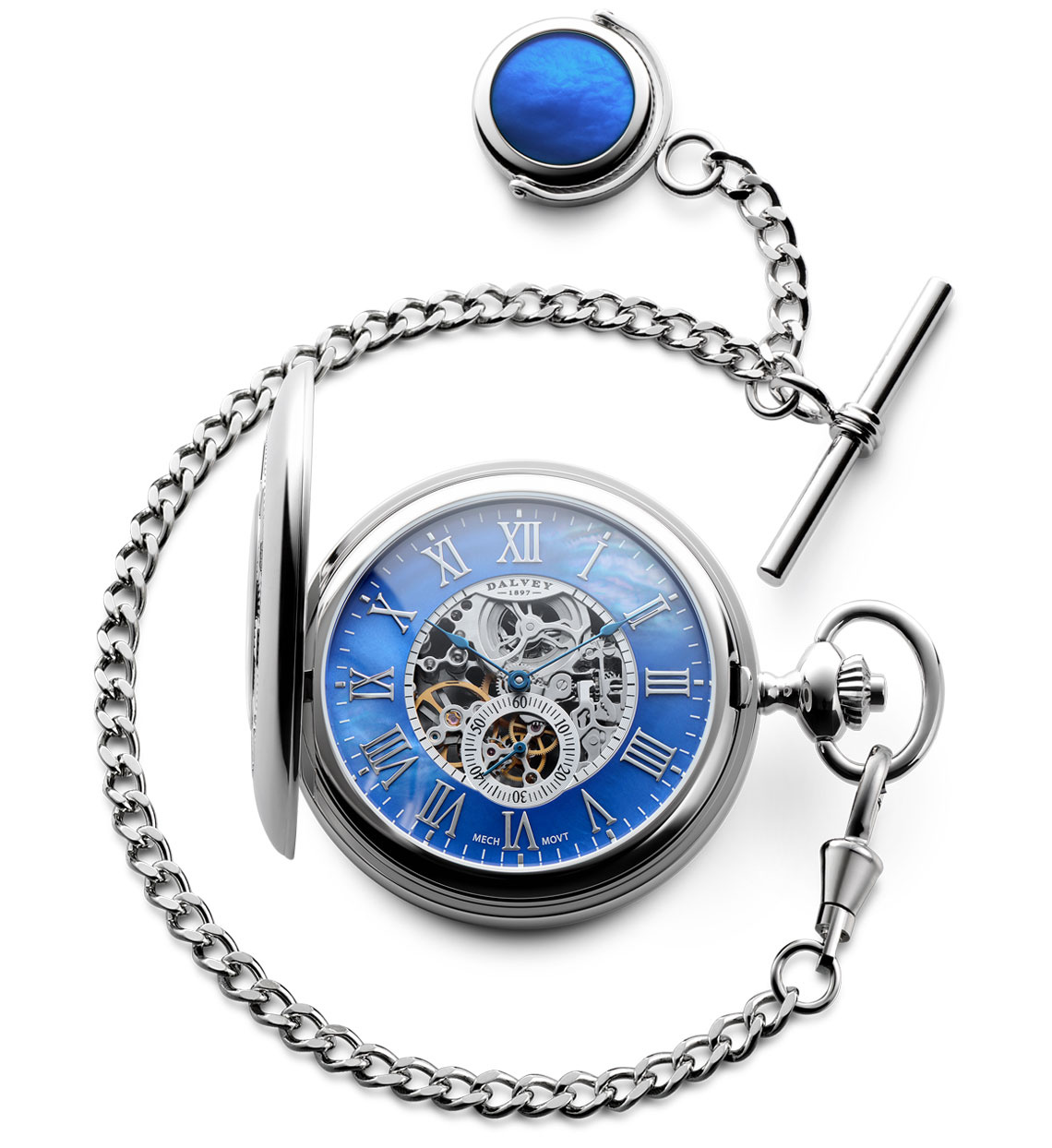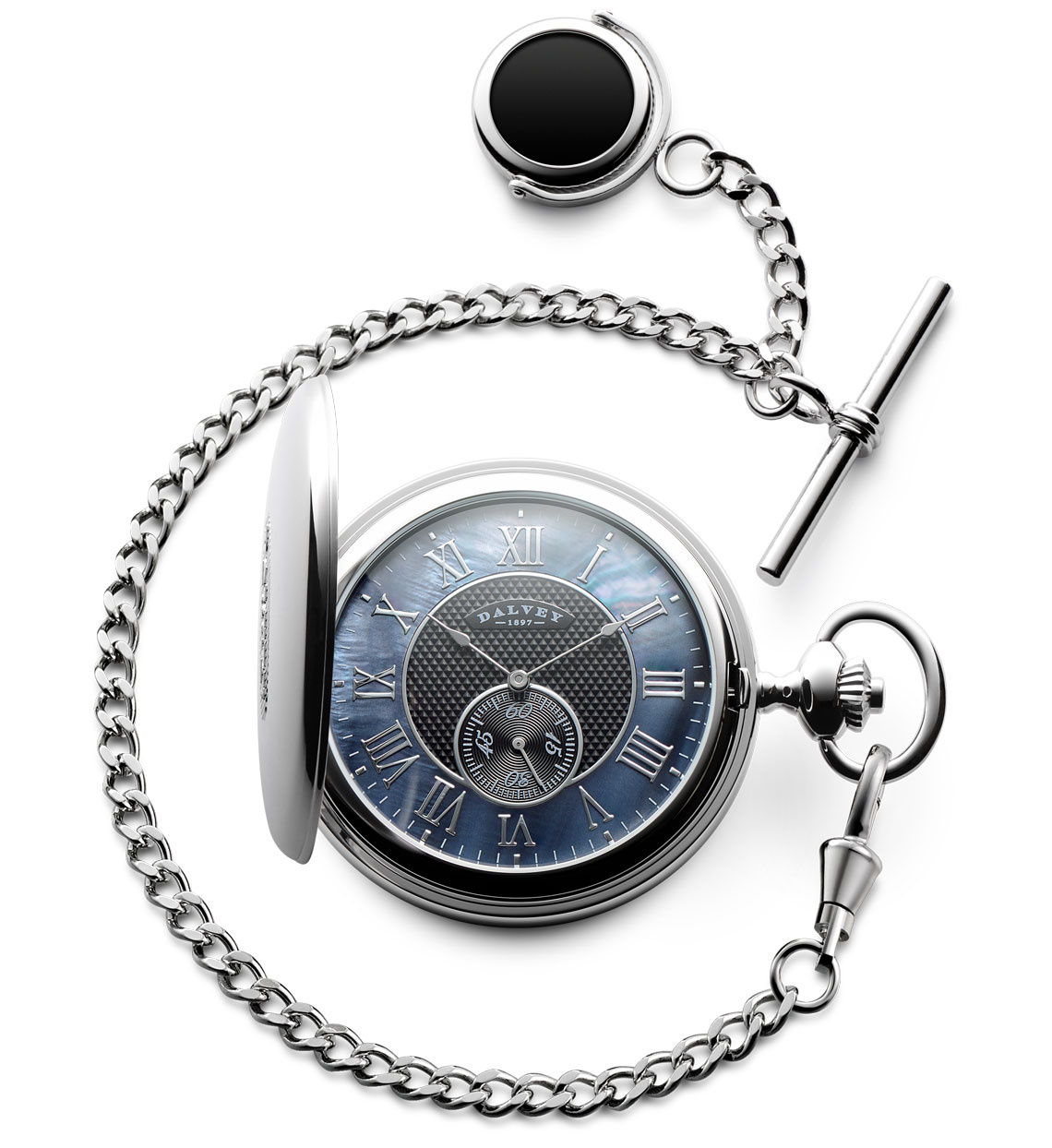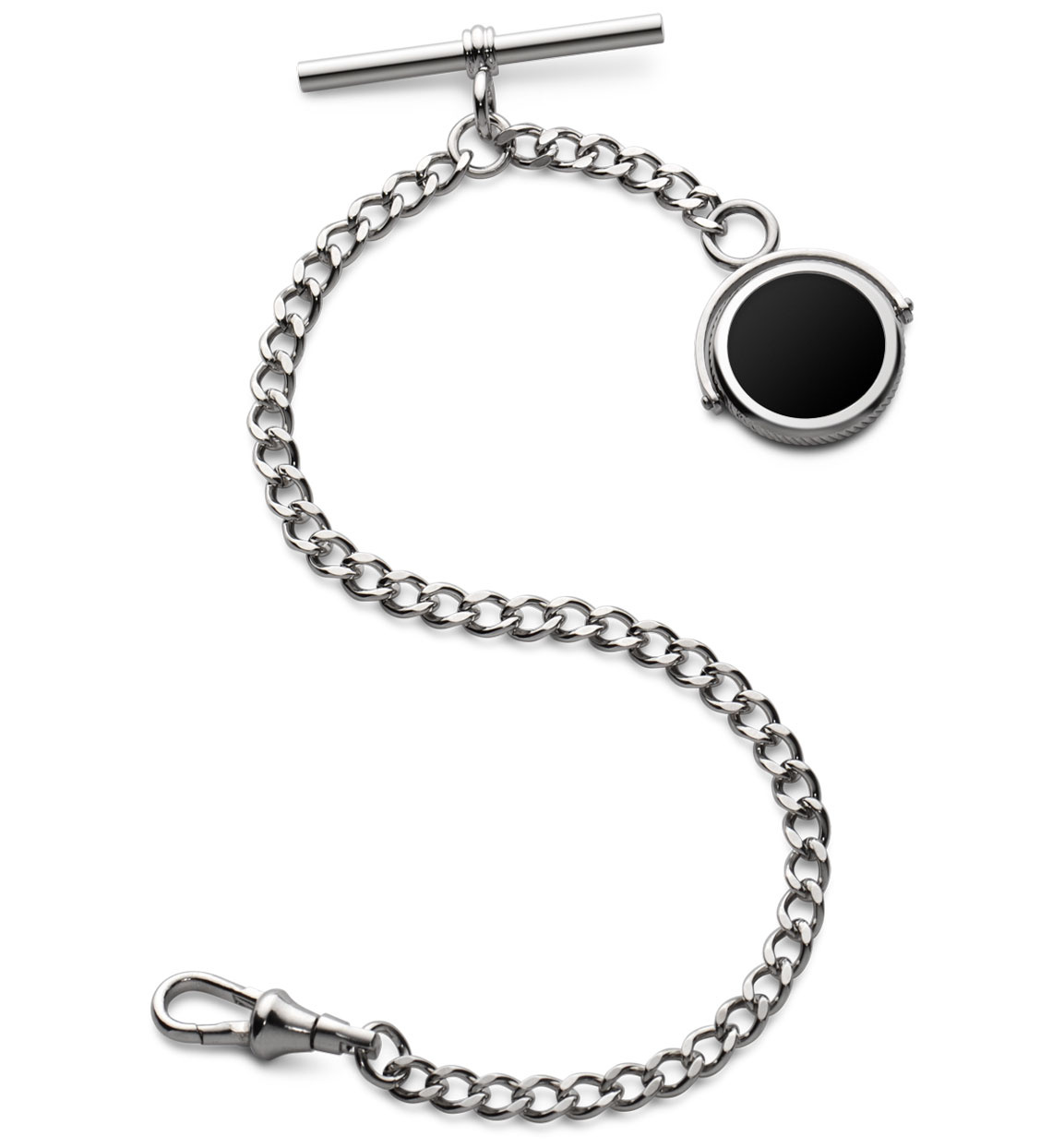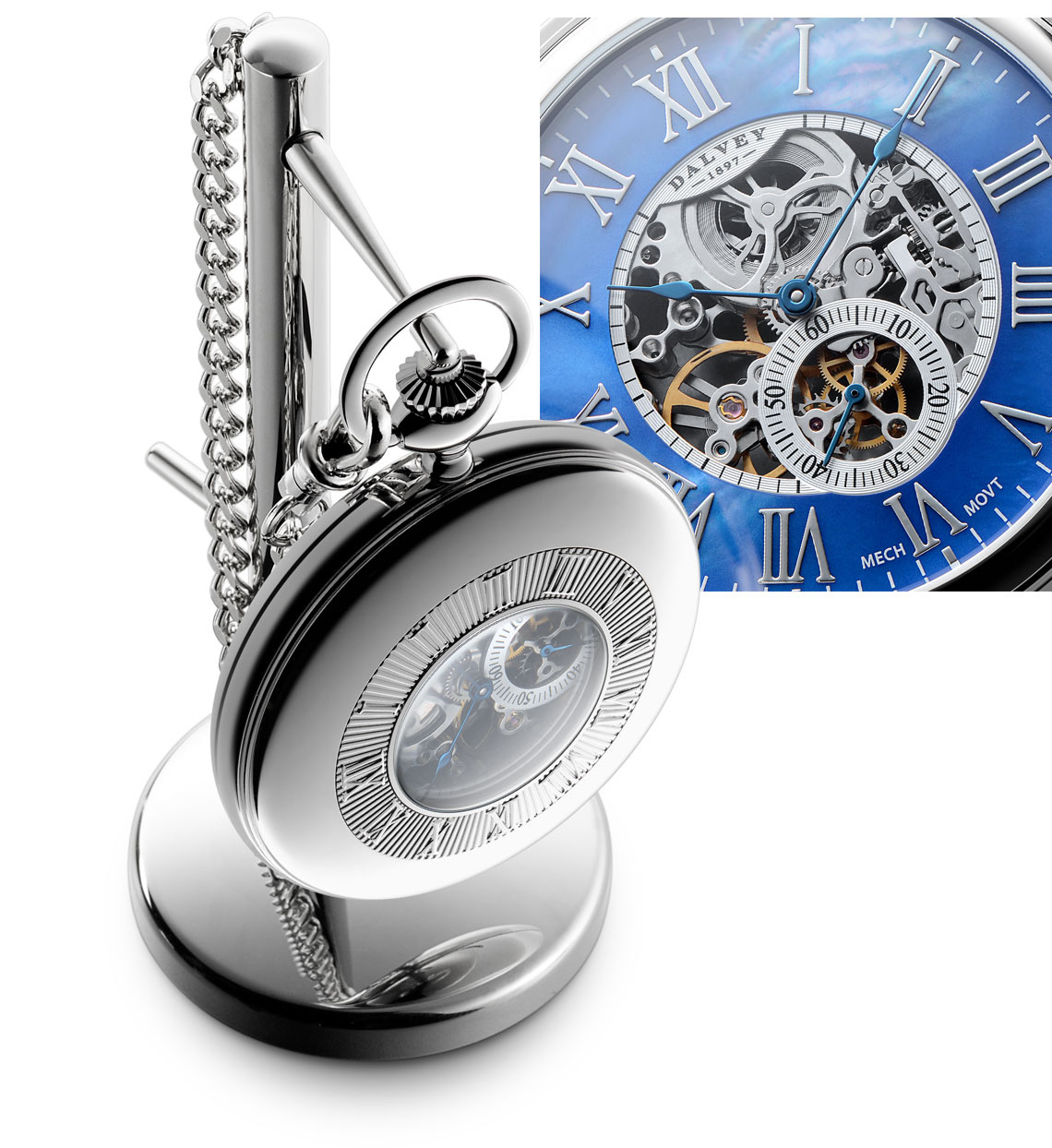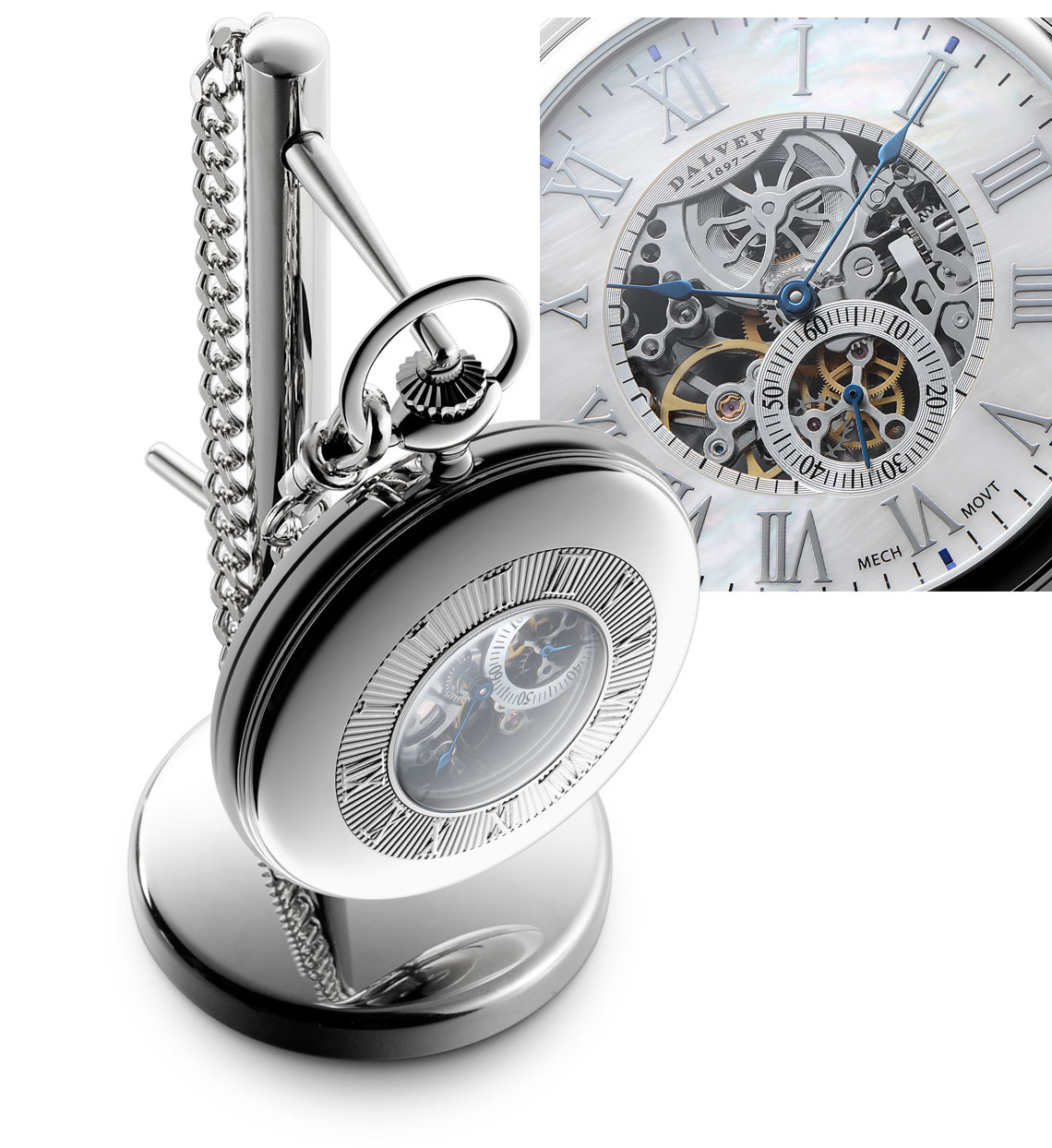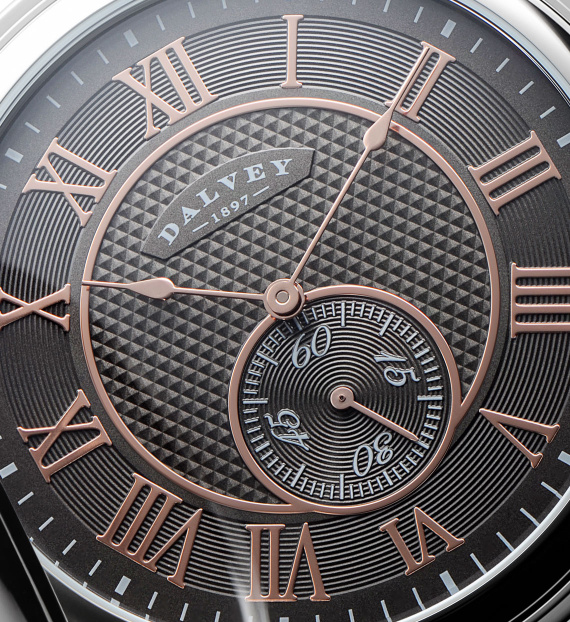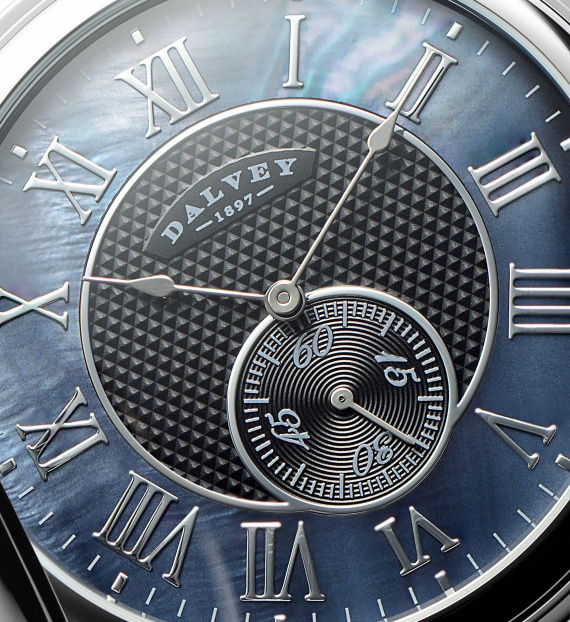Pocket Watches
The Ultimate Guide to Engraved Pocket Watches
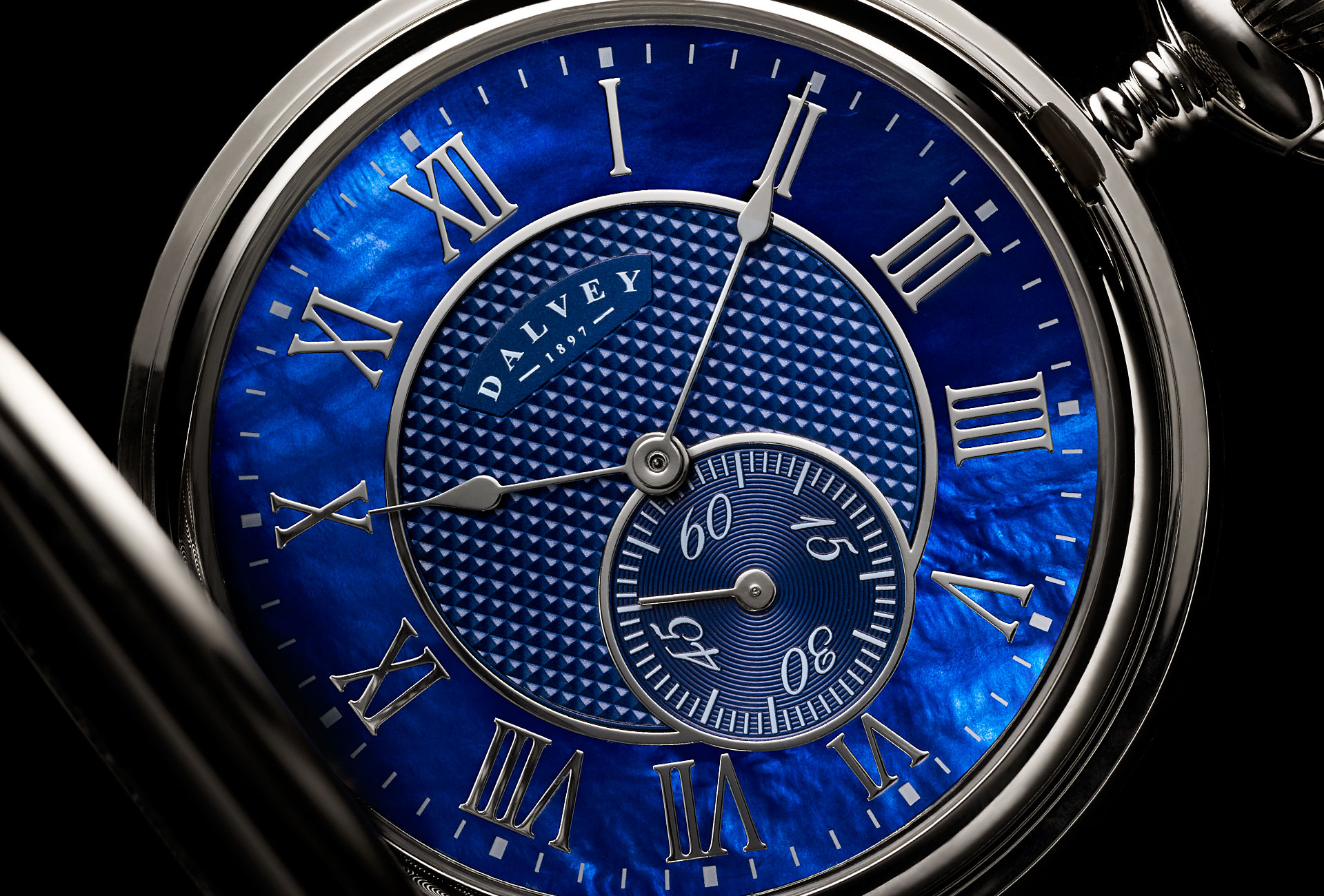
A classic and time-honoured gift, an engraved pocket watch comes freighted with the symbolism of endurance over time, commitment, longevity, and of course that of whatever message is inscribed on the watch.
A very personal accessory, the pocket watch is a reliable companion and frequently-consulted point of reference: making it the ideal canvas on which to engrave a heartfelt message, a promise, or a sage injunction. Many people choose to give a pocket watch at a major juncture in life, such as a wedding, anniversary, graduation, retirement, or significant birthday, and often commemorate the occasion with engraved dates and initials.
The History of the Pocket Watch
The history of time-keeping mechanics is long - stretching back to the invention of water clocks - but the history of the mechanical pocket watch, specifically, begins in the 17th Century. The first timepieces to be worn on the person were much larger than what we would recognise as a pocket watch today, and were initially cylindrical in shape, and worn around the neck as pendants. These early mechanical watches were invariably ornamented with engraved detailing, and were very valuable.
Later in the 16th Century a rounded form of mechanical watch was developed - this became known as the “Nuremberg Egg”, and its manufacture is credited to advancements in horology developed by Peter Henlein of Nuremberg. These mechanical watches were not very accurate, and had a single hand, to tell the hour. Such “eggs” had the form of a “pomander”: a gold ball used to house perfume and believed to fend against disease.

Oldest known painting to feature a pocket watch
Believed to be Cosimo I de Medici - 1560
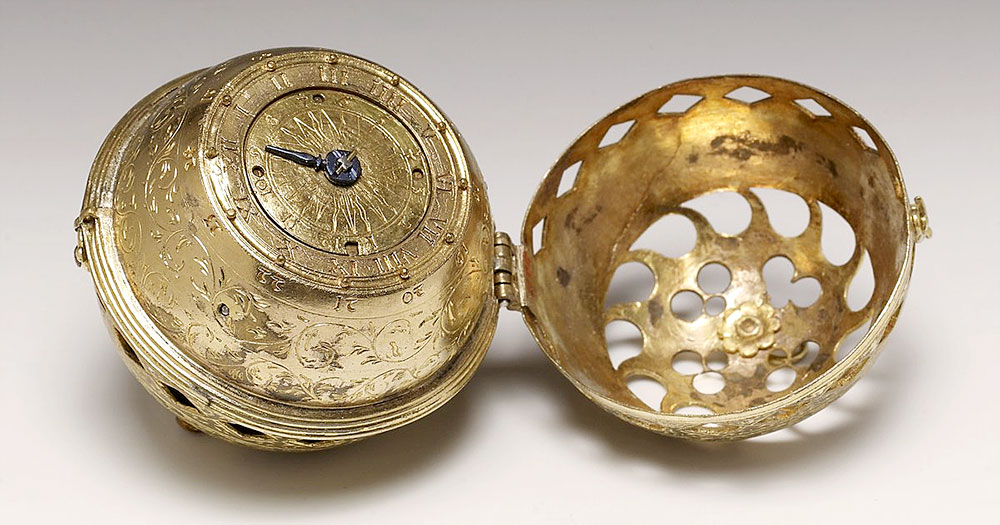
Pomander Watch - 1530
The History of the Pocket Watch
The pocket watch as we would recognise it today arose in part as a consequence of the introduction of the pocketed waistcoat (vest), by Charles II - originally King of Scotland, and, following the Restoration, later King of England and Ireland as well. This sartorial innovation prompted the development of watches that could be carried in a waistcoat pocket, with a chain attaching to a buttonhole.
A major advance in pocket watch manufacture arose in 1755, when the Englishman, Thomas Mudge, invented the lever escapement. An “escapement” is the mechanism by which a continuous force is converted into a periodic, oscillating pulse: it is how the continuous force of a spring is transmitted into the regular beats or ticks of a watch. Prior to 1755, watches had relied upon the “verge escapement”, which was much less accurate than its levered counterpart. Even to this day, all mechanical timekeepers use lever escapements. Mudge was actually one of many English watchmakers: at the time, Britain led the world in the manufacture of watches, and was only to lose this advantage in the first half of the 19th Century.

King Charles II
1630–1685
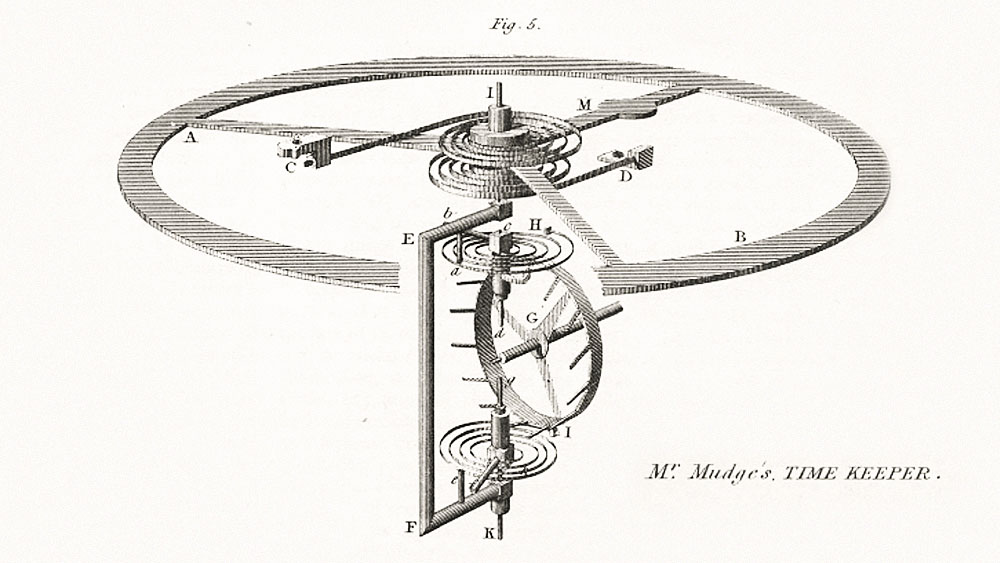
Thomas Mudge - Detached Lever Escapement - 1754
The decline of the British watchmaking industry was prompted by a movement very much like that of the Luddites (famed for their destruction of innovative weaving machinery with a view to the preservation of their jobs and industry). The Swiss watchmaker, Pierre Frederic Ingold, driven by a vision of constructing machines that would make all the parts necessary for the construction of a pocket watch, at first attempted to realise his ambition in Switzerland and Paris, before arriving in London to establish the British Watch & Clock Making Company, in 1842. He was richly financed for this endeavour by many investors, all of whom were disappointed when Parliament was persuaded to legislate against the company raising money, in order (in theory) to protect the jobs of those whom the machines might threaten to replace.
In response, Ingold moved to America, and rather than saving jobs, Parliament had in fact ensured the decline of the British watchmaking industry, which failed to modernise in the second half of the nineteenth century, and lost its competitive advantage to Switzerland and America.
Anatomy of a Pocket Watch

How does a Pocket Watch work?
While pocket watch movements are highly complex mechanical arrangements, the main components can be summarised as follows:
• A power source delivers a constant source of power. In the case of quartz movements, this is from an electric battery; for a mechanical pocket watch, the power source is a coiled spring.
• This constant power is transmitted through the gear train and converted into beats, or ticks, via the escapement.
• The escapement sends pulses of force to the balance wheel, which oscillates back and forth with the aid of the balance spring.
• The balance wheel, via the dial train, drives the hands of the watch.

Main Spring
The power source of a mechanical pocket watch. Winding the watch tightens the main spring.
Gear Train
The series of gears that allow for the transmission of power from the main spring to the escapement.
Lever Escapement
The ingenious mechanism by which a continuous force is converted into a regular series of pulses.
Balance Wheel
The oscillating wheel that receives pulses of force from the escapement, and which rocks back and forth.
Balance Spring
The secondary spring that harmonises with the balance wheel to produce its regular oscillations.
Dial Train
The series of gears that transmits power from the balance wheel into rotational force on the hand spindle, and which ultimately permits hands to turn and the pocket watch to function for the user.
Jewel Bearings
Tiny spherical rubies are used as bearings to minimise friction and consequent wear in moving parts. Jewel bearings are critical to accurate timekeeping in a mechanical watch.
Movement
The term for the full assembly of mechanical components that make up the clockwork of the pocket watch. The movement is the engine of the watch.
Dial
The face that the user sees, and from which the time is read. Ordinarily adorned with Roman numerals.
Crystal
The crystal glass lens used to encase the dial and hands.
Crown
The control mechanism for setting the time.
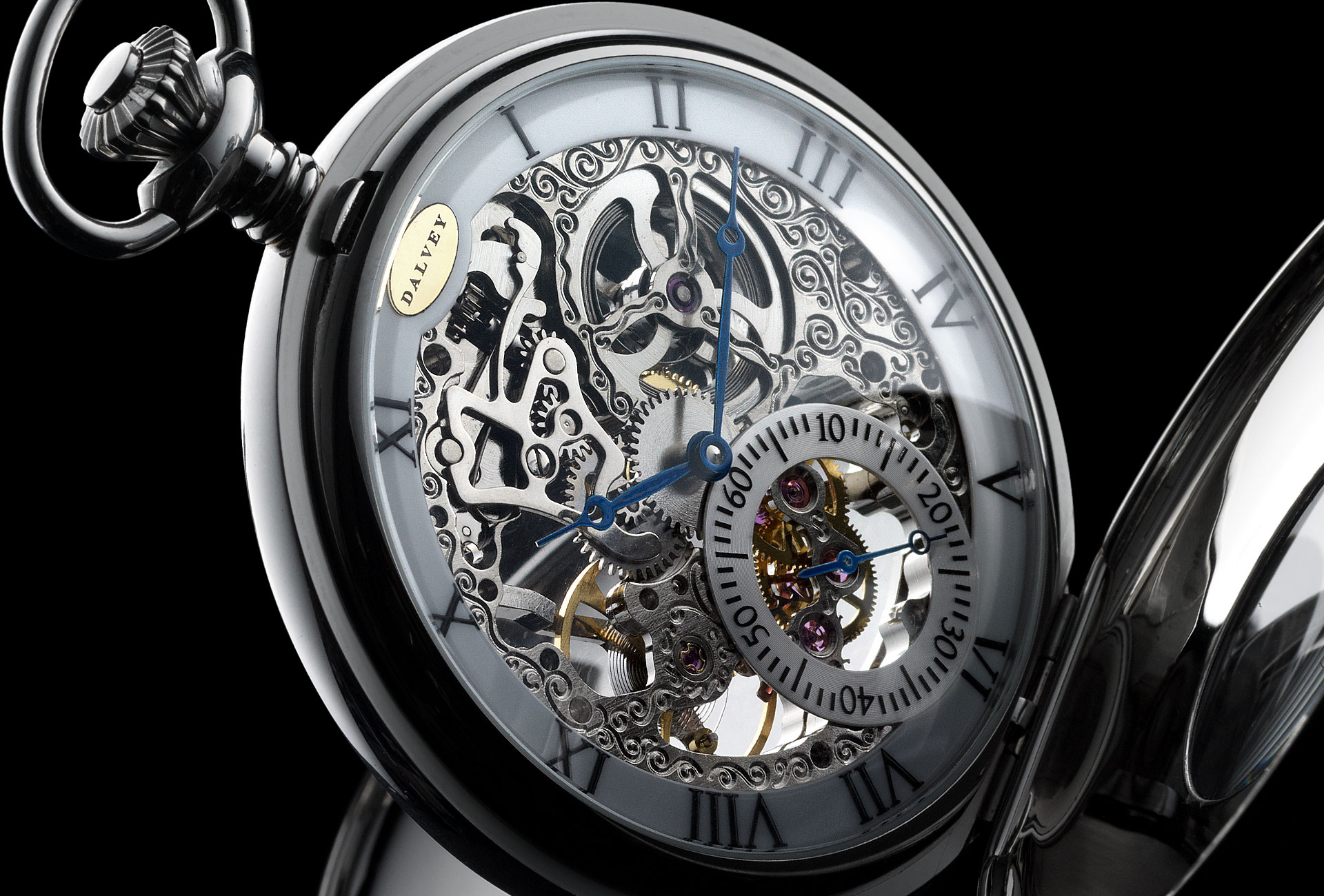
Pocket Watch Styles
Full Hunter Pocket Watch
The term “Full Hunter” denotes a pocket watch with a sprung lid, and was developed so that gentlemen could observe the time with one hand, while holding the reigns of their “hunter” (horse) in the other. The sprung lid would protect the dial, Roman numerals, hands, and crystal from damage and debris, making the pocket watch much more robust.
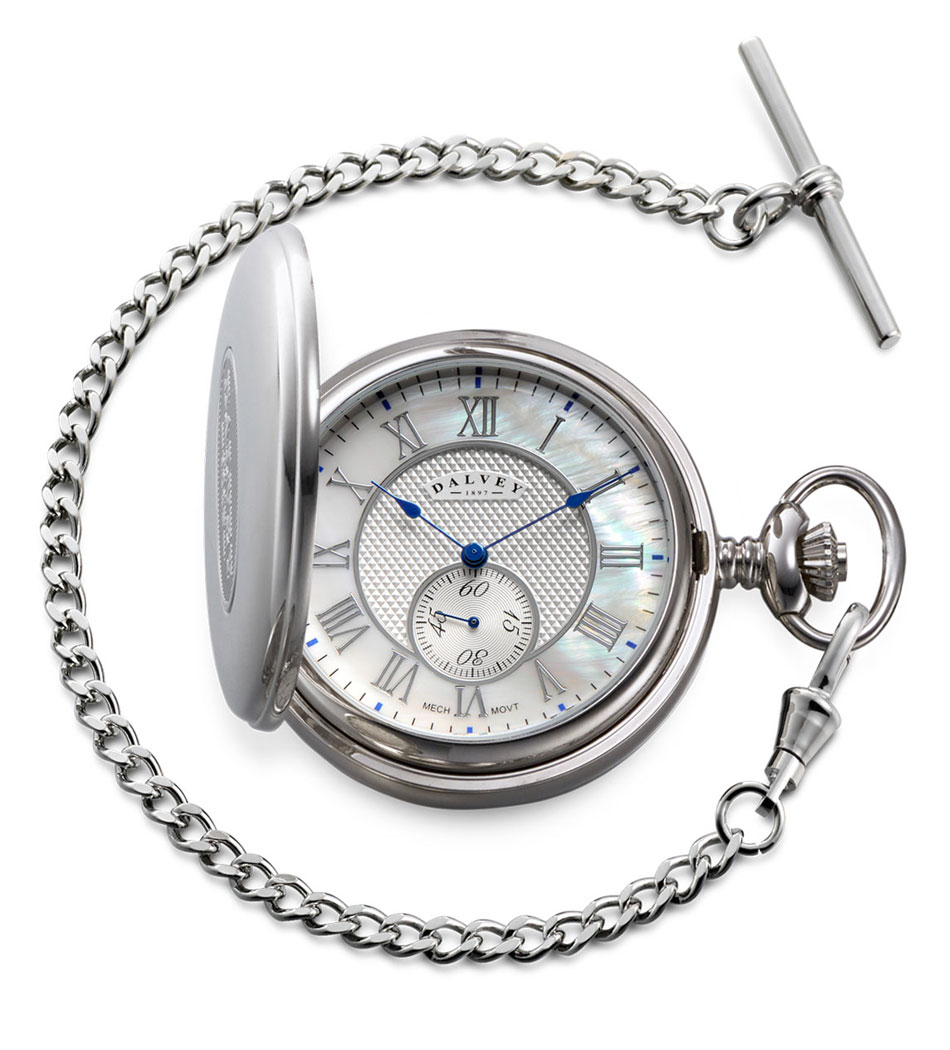
Half Hunter Pocket Watch
“Half Hunter” watches are like Hunter watches, but have a window on the lid such that the time can be read at a glance without having to open the watch.
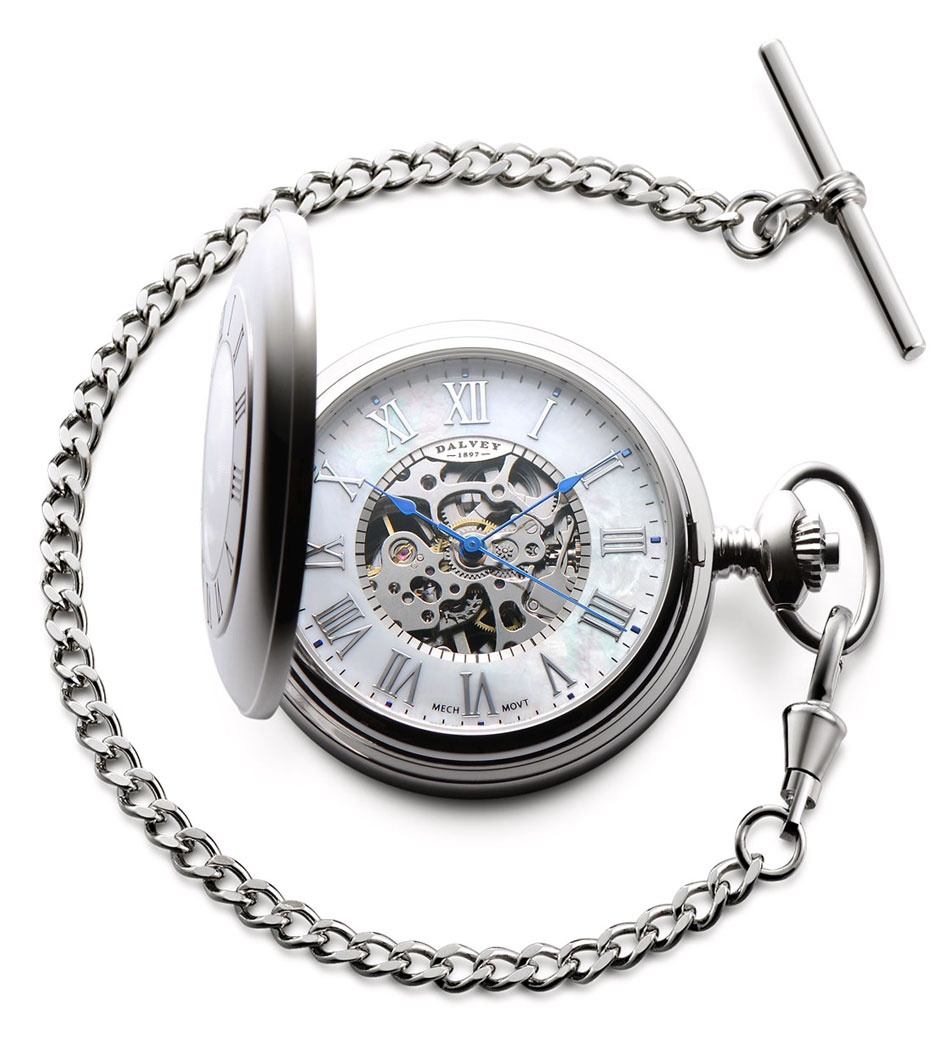
Skeleton Pocket Watch
A skeleton pocket watch features an exposed movement that can be seen through an aperture in the dial. Skeletal movements allow for the observation of the movement in action, as well as displaying the beautiful mechanical detail and precision instrumentation of the watch.
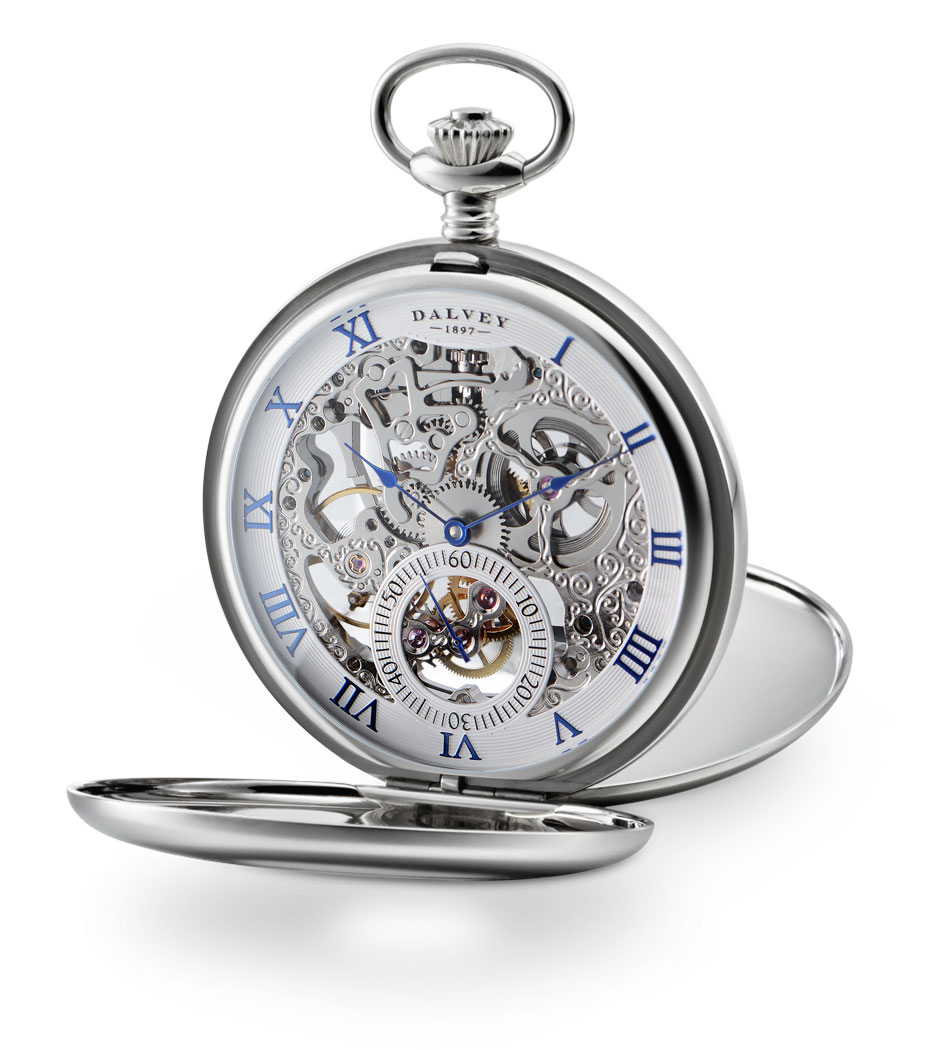
Mechanical / Quartz
Until the 20th Century, all pocket watches were mechanical. This changed with the invention of the quartz movement, which works on the basis of applying electrical charge to a quartz crystal, which resonates with very precise frequency - so precise, in fact, that the cheapest quartz movements are likely to be more accurate than the most expensive mechanical movements.
Whereas a mechanical movement transmits continuous power into an oscillating force through the escapement and balance wheel, a quartz movement achieves oscillation merely from subjecting the quartz crystal to an electric charge.
Though quartz-driven movements are reliable and less expensive than mechanical movements, many people continue to prefer the latter, as they evince the craftsmanship and triumph of ingenuity of their production in their fine gears, jeweled bearings, and intricate systems of harmonisation and balance.

Albert Pocket Watch Chain
For a full account of the Albert Pocket Watch Chain, please refer to this link.
“An “Albert chain” describes a typical pocket watch chain that has a “drop” - a small additional section of chain descending from the T-bar that attaches to a waistcoat (or jacket lapel). This short length of chain terminates in some kind of adornment, normally referred to as a “fob”. Historically, these were sometimes badges of affiliation of some form or other (family, military, club, or university crests), though the most common variety would probably have been purely ornamental.”
Pocket Watch Stands
While an engraved pocket watch makes an exceptional gift, they are as often treasured as they are worn. We developed our Pocket Watch Stand to allow one to display a beloved pocket watch while it is not being worn.
Heirloom
Pocket watches have long carried symbolic resonance, and have traditionally been handed from one generation to the next. In such contexts, the original engraving becomes especially meaningful, serving to connect scion to ancestor, and offering a window onto the past. The compact, ornate, and personal aspects of a pocket watch make it especially well-suited to being handed down through generations.
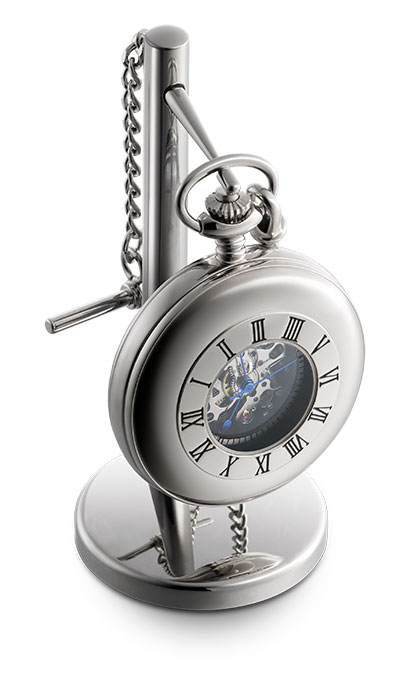
In many countries pocket watches were given upon the retirement of a long-serving member of staff; while this tradition is still maintained in many places, and pocket watches remain a popular retirement gift, they are more frequently given at weddings, graduations, anniversaries, and other such significant moments in a person’s life, worthy of being worthy of being commemorated appropriately.
Engraving / Personalisation
Pocket watches are ideal for personalisation with unique engraving. At Dalvey we can engrave the back, as well as the mirror-polished internal lids of our pocket watches. The internal lid engraving is particularly well-suited to the expression of heartfelt sentiments, which can be observed when checking the time in a manner similar to that of a locket.
While suitable for the commemoration of any significant event in the life of the recipient, pocket watches are especially popular as wedding gifts (from bride to groom; from groom to father-of-the-bride; from groom to best man; or from a guest to the couple), anniversary gifts, graduation gifts, retirement gifts, and birthday gifts.
Wedding
It’s our time
Take your time and don’t be late
Counting down the seconds till “I Do”
Anniversary
I will love you until the end of time
I love you more with each passing minute
Time is a gift that has brought you to me
Graduation
Time is precious, waste it wisely
Retirement
Tempus neminem manet
Birthday
The best time is yet to come
Always make time for memories and dreams
Time flies with you
FAQs
How to wear a pocket watch?
For a comprehensive guide, please visit this resource.
In brief, the traditional - but by no means only - way to wear a pocket watch is to carry it in the left waistcoat (vest) pocket if you’re right-handed, or the right pocket if you’re left-handed, with the T-bar on the chain fitted through one of the waistcoat (vest) buttonholes. Usually the third buttonhole up from the bottom will look best.
A pocket watch can also be worn with a two-piece suit, and even with jeans. For further guidance, please click on the above link.
What button does a pocket watch go on?
There is no fixed rule, though you should avoid the bottom buttonhole, which is usually left undone. As a rough heuristic, attaching the T-bar of your pocket watch chain to the third buttonhole up from the bottom usually looks good.
How do pocket watches work?
In brief, pocket watches work by taking a continuous power source, such as a coiled spring, and converting this continuous force into pulses, via the escapement and the balance wheel. These pulses drive the gears of the dial train, which in turn drive the hands and allow the user to read the time from the dial.
What should I get engraved on my watch?
Hopefully the above guide should assist you in making a decision. The main requirement is to calibrate the engraving appropriately to the occasion. Beyond that, you may want to include dates, names, initials, or a message that commemorates the occasion, captures a heartfelt and enduring sentiment, or functions as an injunction to follow a particular path.
What is the correct way to wear a pocket watch?
While there isn’t really a “correct” way, the traditional way to wear a pocket watch is with a waistcoat or vest, with the watch in the left pocket of the waistcoat (vest) if you’re right-handed, and vice versa if you’re left-handed, with the T-bar of the watch chain fitted through a buttonhole on the waistcoat or vest.
How do you wear a pocket watch with a single Albert?
A pocket watch with a single Albert chain should be worn exactly as you would ordinarily wear your pocket watch; the only difference is that the fob ornamentation from the Albert chain should be left to hang from the buttonhole to which the T-bar of the chain is affixed.
How do you wear a pocket watch with a suit jacket?
You can either carry the watch in a jacket pocket, affixing the chain to a buttonhole, or else you can carry the watch in a trouser pocket, with the chain affixed to a belt loop.
Can you wear a pocket watch without a vest?
Yes, pocket watches can be worn with a two-piece suit, or even with jeans.
How do you wear a pocket watch for jeans?
To wear a pocket watch with jeans, carry the watch in a pocket, and affix the chain to a belt loop.
What is the difference between a half hunter and full hunter pocket watch?
Full hunter pocket watches have a lid that fully covers the dial, hands, Roman numerals, and crystal of the pocket watch. A half-hunter is similar, but has an aperture on the lid through which the time can be read without having to fully open the watch.
What are the best pocket watches?
While obviously a subjective matter to some degree, the best pocket watches are likely to feature high quality movements: if a mechanical watch, it should have a high quality, 17 jewel mechanical watch movement, a stainless steel case, a luxury-watch-standard dial, a stainless steel chain, and exceptional standards of manufacture and finishing. When it comes to quartz pocket watches, the best pocket watches will share many of the features of the best pocket watches of the mechanical variety, but will obviously have a high quality quartz movement as opposed to mechanical.
Many pocket watch cases are made of plated brass, which does not produce the same standard of crisp, clean, engineered, finish, and are liable to have the plating wear off. It used to be common for a gentleman to own a gold pocket watch, though a gold pocket watch is relatively rare today. Of course, the best pocket watch is not necessarily a gold pocket watch - though often a nice vintage pocket watch will have gold casing. Bear in mind that a vintage pocket watch is unlikely to be anywhere near as reliable as a high quality contemporary model, such as those of Dalvey.
The Ultimate Guide to Engraved Pocket Watches
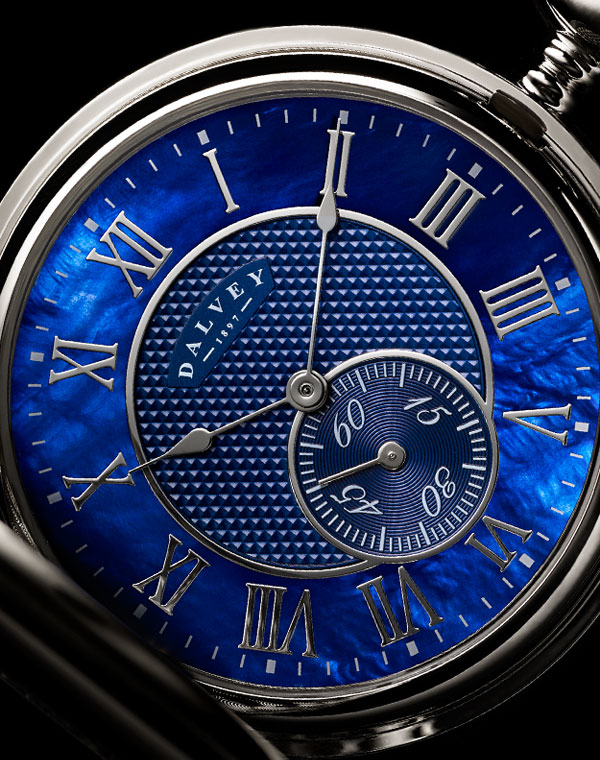
A classic and time-honoured gift, an engraved pocket watch comes freighted with the symbolism of endurance over time, commitment, longevity, and of course that of whatever message is inscribed on the watch.
A very personal accessory, the pocket watch is a reliable companion and frequently-consulted point of reference: making it the ideal canvas on which to engrave a heartfelt message, a promise, or a sage injunction. Many people choose to give a pocket watch at a major juncture in life, such as a wedding, anniversary, graduation, retirement, or significant birthday, and often commemorate the occasion with engraved dates and initials.

Oldest known painting to feature a pocket watch
Believed to be Cosimo I de Medici - 1560
The History of the Pocket Watch
The history of time-keeping mechanics is long - stretching back to the invention of water clocks - but the history of the mechanical pocket watch, specifically, begins in the 17th Century. The first timepieces to be worn on the person were much larger than what we would recognise as a pocket watch today, and were initially cylindrical in shape, and worn around the neck as pendants. These early mechanical watches were invariably ornamented with engraved detailing, and were very valuable.
Later in the 16th Century a rounded form of mechanical watch was developed - this became known as the “Nuremberg Egg”, and its manufacture is credited to advancements in horology developed by Peter Henlein of Nuremberg. These mechanical watches were not very accurate, and had a single hand, to tell the hour. Such “eggs” had the form of a “pomander”: a gold ball used to house perfume and believed to fend against disease.
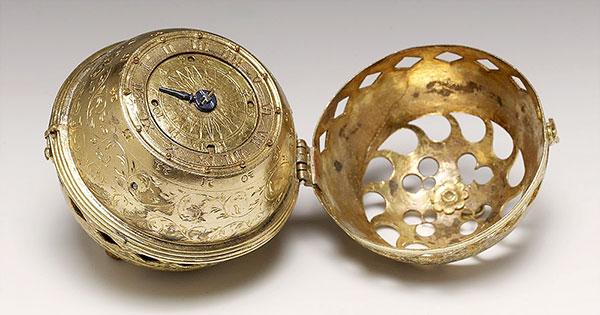
Pomander Watch - 1530
The pocket watch as we would recognise it today arose in part as a consequence of the introduction of the pocketed waistcoat (vest), by Charles II - originally King of Scotland, and, following the Restoration, later King of England and Ireland as well. This sartorial innovation prompted the development of watches that could be carried in a waistcoat pocket, with a chain attaching to a buttonhole.

King Charles II - 1630–1685
A major advance in pocket watch manufacture arose in 1755, when the Englishman, Thomas Mudge, invented the lever escapement. An “escapement” is the mechanism by which a continuous force is converted into a periodic, oscillating pulse: it is how the continuous force of a spring is transmitted into the regular beats or ticks of a watch. Prior to 1755, watches had relied upon the “verge escapement”, which was much less accurate than its levered counterpart. Even to this day, all mechanical timekeepers use lever escapements. Mudge was actually one of many English watchmakers: at the time, Britain led the world in the manufacture of watches, and was only to lose this advantage in the first half of the 19th Century.
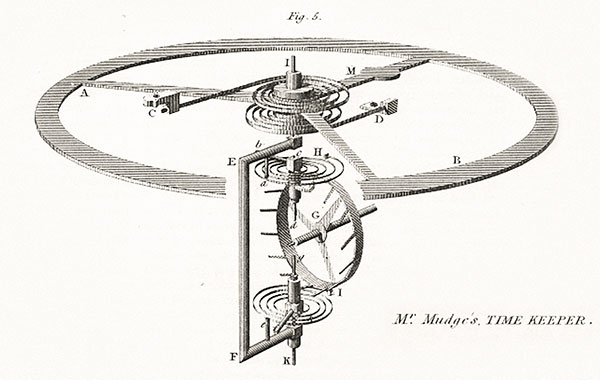
Thomas Mudge - Detached Lever Escapement - 1754
The decline of the British watchmaking industry was prompted by a movement very much like that of the Luddites (famed for their destruction of innovative weaving machinery with a view to the preservation of their jobs and industry). The Swiss watchmaker, Pierre Frederic Ingold, driven by a vision of constructing machines that would make all the parts necessary for the construction of a pocket watch, at first attempted to realise his ambition in Switzerland and Paris, before arriving in London to establish the British Watch & Clock Making Company, in 1842. He was richly financed for this endeavour by many investors, all of whom were disappointed when Parliament was persuaded to legislate against the company raising money, in order (in theory) to protect the jobs of those whom the machines might threaten to replace.
In response, Ingold moved to America, and rather than saving jobs, Parliament had in fact ensured the decline of the British watchmaking industry, which failed to modernise in the second half of the nineteenth century, and lost its competitive advantage to Switzerland and America.
Anatomy of a Pocket Watch
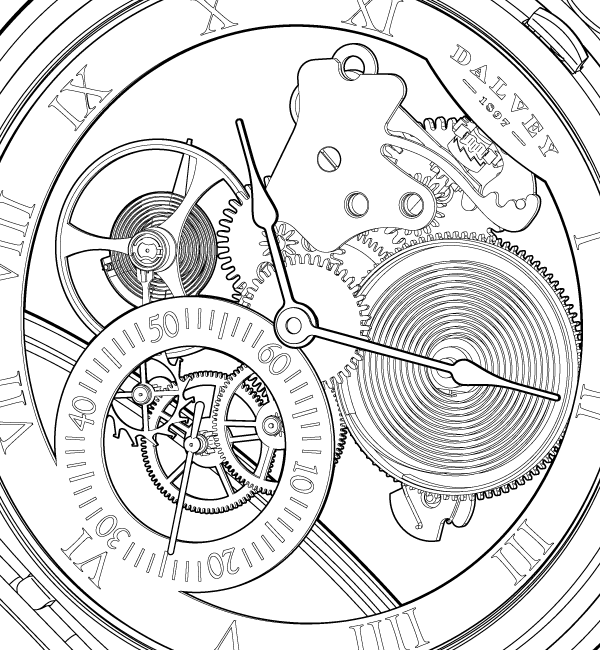
How does a Pocket Watch work?
While pocket watch movements are highly complex mechanical arrangements, the main components can be summarised as follows:
A power source delivers a constant source of power. In the case of quartz movements, this is from an electric battery; for a mechanical pocket watch, the power source is a coiled spring.
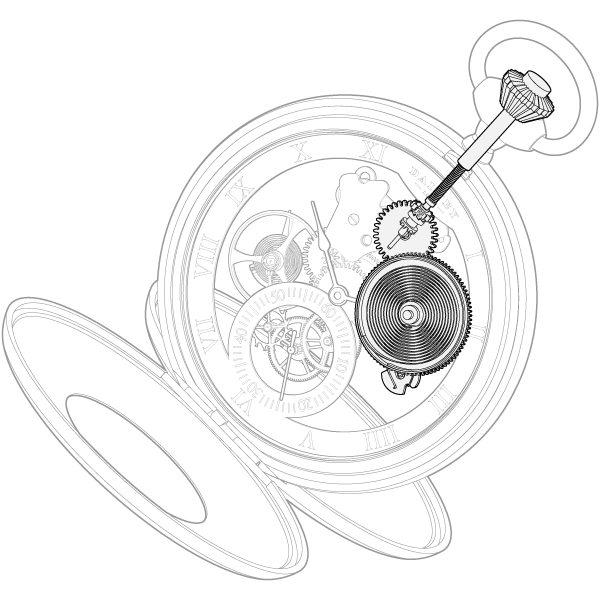
POWER SOURCE
This constant power is transmitted through the gear train and converted into beats, or ticks, via the escapement.
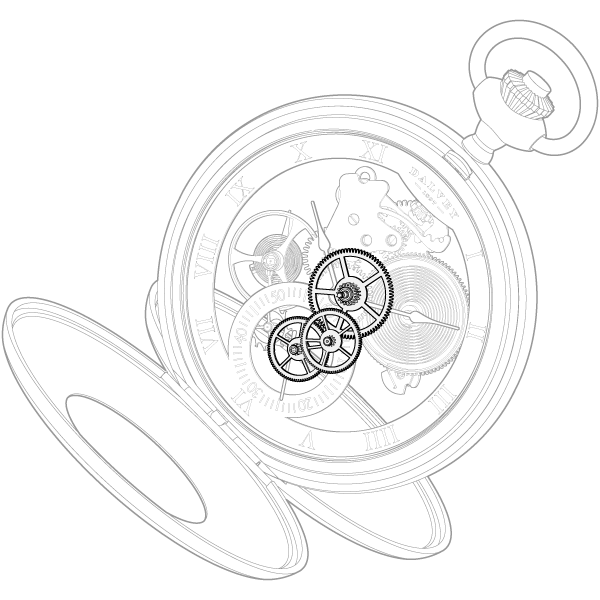
GEAR TRAIN
The escapement sends pulses of force to the balance wheel, which oscillates back and forth with the aid of the balance spring.
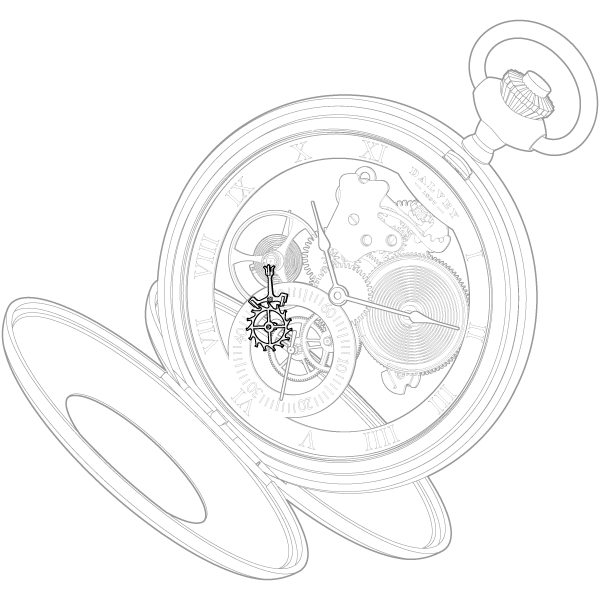
ESCAPEMENT
The balance wheel, via the dial train, drives the hands of the watch.
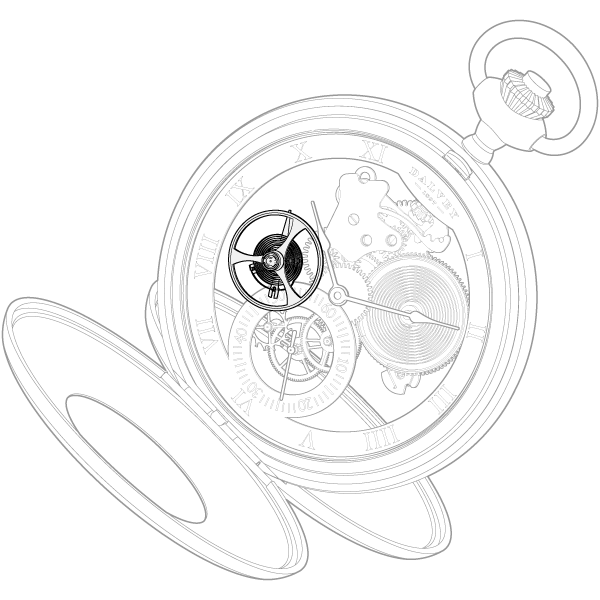
BALANCE WHEEL
Main Spring
The power source of a mechanical pocket watch. Winding the watch tightens the main spring.
Gear Train
The series of gears that allow for the transmission of power from the main spring to the escapement.
Lever Escapement
The ingenious mechanism by which a continuous force is converted into a regular series of pulses.
Balance Wheel
The oscillating wheel that receives pulses of force from the escapement, and which rocks back and forth.
Balance Spring
The secondary spring that harmonises with the balance wheel to produce its regular oscillations.
Dial Train
The series of gears that transmits power from the balance wheel into rotational force on the hand spindle, and which ultimately permits hands to turn and the pocket watch to function for the user.
Jewel Bearings
Tiny spherical rubies are used as bearings to minimise friction and consequent wear in moving parts. Jewel bearings are critical to accurate timekeeping in a mechanical watch.
Movement
The term for the full assembly of mechanical components that make up the clockwork of the pocket watch. The movement is the engine of the watch.
Dial
The face that the user sees, and from which the time is read. Ordinarily adorned with Roman numerals.
Crystal
The crystal glass lens used to encase the dial and hands.
Crown
The control mechanism for setting the time.
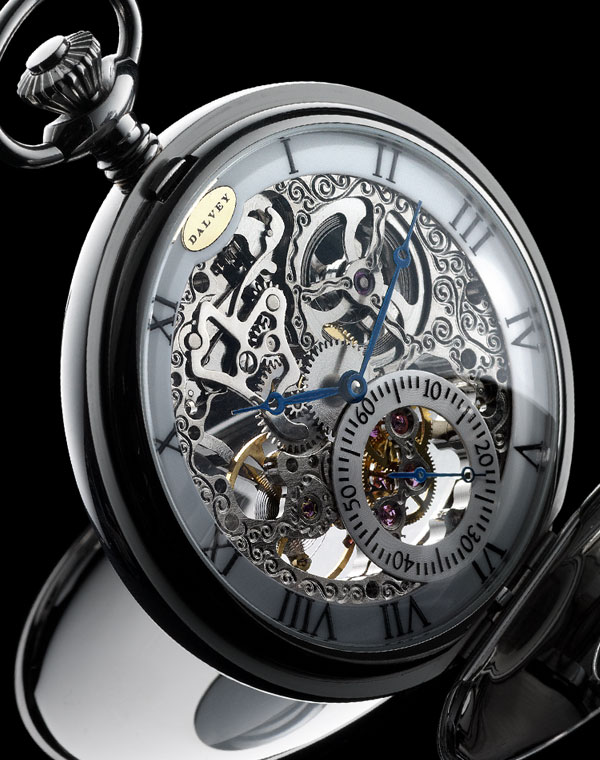
Pocket Watch Styles
Full Hunter Pocket Watch
The term “Full Hunter” denotes a pocket watch with a sprung lid, and was developed so that gentlemen could observe the time with one hand, while holding the reigns of their “hunter” (horse) in the other. The sprung lid would protect the dial, Roman numerals, hands, and crystal from damage and debris, making the pocket watch much more robust.

Half Hunter Pocket Watch
“Half Hunter” watches are like Hunter watches, but have a window on the lid such that the time can be read at a glance without having to open the watch.

Skeleton Pocket Watch
A skeleton pocket watch features an exposed movement that can be seen through an aperture in the dial. Skeletal movements allow for the observation of the movement in action, as well as displaying the beautiful mechanical detail and precision instrumentation of the watch.

Mechanical / Quartz
Until the 20th Century, all pocket watches were mechanical. This changed with the invention of the quartz movement, which works on the basis of applying electrical charge to a quartz crystal, which resonates with very precise frequency - so precise, in fact, that the cheapest quartz movements are likely to be more accurate than the most expensive mechanical movements.
Whereas a mechanical movement transmits continuous power into an oscillating force through the escapement and balance wheel, a quartz movement achieves oscillation merely from subjecting the quartz crystal to an electric charge.
Though quartz-driven movements are reliable and less expensive than mechanical movements, many people continue to prefer the latter, as they evince the craftsmanship and triumph of ingenuity of their production in their fine gears, jeweled bearings, and intricate systems of harmonisation and balance.
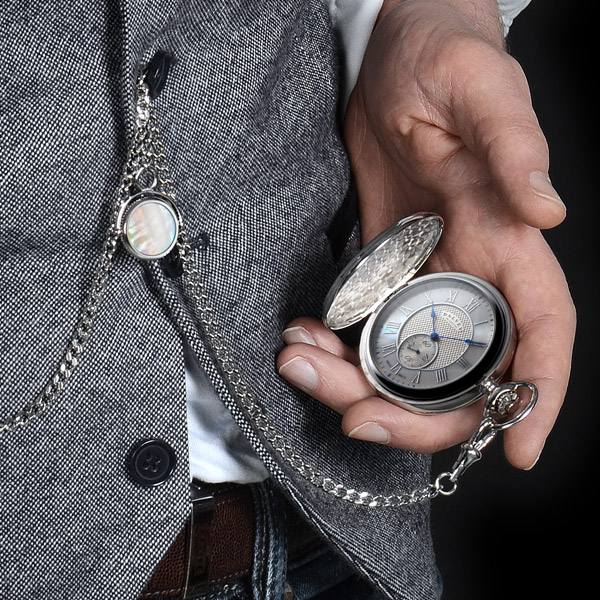
Albert Pocket Watch Chain
For a full account of the Albert Pocket Watch Chain, please refer to this link.
“An “Albert chain” describes a typical pocket watch chain that has a “drop” - a small additional section of chain descending from the T-bar that attaches to a waistcoat (or jacket lapel). This short length of chain terminates in some kind of adornment, normally referred to as a “fob”. Historically, these were sometimes badges of affiliation of some form or other (family, military, club, or university crests), though the most common variety would probably have been purely ornamental.”
Pocket Watch Stands
While an engraved pocket watch makes an exceptional gift, they are as often treasured as they are worn. We developed our Pocket Watch Stand to allow one to display a beloved pocket watch while it is not being worn.

Heirloom
Pocket watches have long carried symbolic resonance, and have traditionally been handed from one generation to the next. In such contexts, the original engraving becomes especially meaningful, serving to connect scion to ancestor, and offering a window onto the past. The compact, ornate, and personal aspects of a pocket watch make it especially well-suited to being handed down through generations.
In many countries pocket watches were given upon the retirement of a long-serving member of staff; while this tradition is still maintained in many places, and pocket watches remain a popular retirement gift, they are more frequently given at weddings, graduations, anniversaries, and other such significant moments in a person’s life, worthy of being worthy of being commemorated appropriately.
Engraving / Personalisation
Pocket watches are ideal for personalisation with unique engraving. At Dalvey we can engrave the back, as well as the mirror-polished internal lids of our pocket watches. The internal lid engraving is particularly well-suited to the expression of heartfelt sentiments, which can be observed when checking the time in a manner similar to that of a locket.
While suitable for the commemoration of any significant event in the life of the recipient, pocket watches are especially popular as wedding gifts (from bride to groom; from groom to father-of-the-bride; from groom to best man; or from a guest to the couple), anniversary gifts, graduation gifts, retirement gifts, and birthday gifts.
Wedding
It’s our time
Take your time and don’t be late
Counting down the seconds till “I Do”
Anniversary
I will love you until the end of time
I love you more with each passing minute
Time is a gift that has brought you to me
Graduation
Time is precious, waste it wisely
Retirement
Tempus neminem manet
Birthday
The best time is yet to come
Always make time for memories and dreams
Time flies with you
FAQs
How to wear a pocket watch?
For a comprehensive guide, please visit this resource.
In brief, the traditional - but by no means only - way to wear a pocket watch is to carry it in the left waistcoat (vest) pocket if you’re right-handed, or the right pocket if you’re left-handed, with the T-bar on the chain fitted through one of the waistcoat (vest) buttonholes. Usually the third buttonhole up from the bottom will look best.
A pocket watch can also be worn with a two-piece suit, and even with jeans. For further guidance, please click on the above link.
What button does a pocket watch go on?
There is no fixed rule, though you should avoid the bottom buttonhole, which is usually left undone. As a rough heuristic, attaching the T-bar of your pocket watch chain to the third buttonhole up from the bottom usually looks good.
How do pocket watches work?
In brief, pocket watches work by taking a continuous power source, such as a coiled spring, and converting this continuous force into pulses, via the escapement and the balance wheel. These pulses drive the gears of the dial train, which in turn drive the hands and allow the user to read the time from the dial.
What should I get engraved on my watch?
Hopefully the above guide should assist you in making a decision. The main requirement is to calibrate the engraving appropriately to the occasion. Beyond that, you may want to include dates, names, initials, or a message that commemorates the occasion, captures a heartfelt and enduring sentiment, or functions as an injunction to follow a particular path.
What is the correct way to wear a pocket watch?
While there isn’t really a “correct” way, the traditional way to wear a pocket watch is with a waistcoat or vest, with the watch in the left pocket of the waistcoat (vest) if you’re right-handed, and vice versa if you’re left-handed, with the T-bar of the watch chain fitted through a buttonhole on the waistcoat or vest.
How do you wear a pocket watch with a single Albert?
A pocket watch with a single Albert chain should be worn exactly as you would ordinarily wear your pocket watch; the only difference is that the fob ornamentation from the Albert chain should be left to hang from the buttonhole to which the T-bar of the chain is affixed.
How do you wear a pocket watch with a suit jacket?
You can either carry the watch in a jacket pocket, affixing the chain to a buttonhole, or else you can carry the watch in a trouser pocket, with the chain affixed to a belt loop.
Can you wear a pocket watch without a vest?
Yes, pocket watches can be worn with a two-piece suit, or even with jeans.
How do you wear a pocket watch for jeans?
To wear a pocket watch with jeans, carry the watch in a pocket, and affix the chain to a belt loop.
What is the difference between a half hunter and full hunter pocket watch?
Full hunter pocket watches have a lid that fully covers the dial, hands, Roman numerals, and crystal of the pocket watch. A half-hunter is similar, but has an aperture on the lid through which the time can be read without having to fully open the watch.
What are the best pocket watches?
While obviously a subjective matter to some degree, the best pocket watches are likely to feature high quality movements: if a mechanical watch, it should have a high quality, 17 jewel mechanical watch movement, a stainless steel case, a luxury-watch-standard dial, a stainless steel chain, and exceptional standards of manufacture and finishing. When it comes to quartz pocket watches, the best pocket watches will share many of the features of the best pocket watches of the mechanical variety, but will obviously have a high quality quartz movement as opposed to mechanical.
Many pocket watch cases are made of plated brass, which does not produce the same standard of crisp, clean, engineered, finish, and are liable to have the plating wear off. It used to be common for a gentleman to own a gold pocket watch, though a gold pocket watch is relatively rare today. Of course, the best pocket watch is not necessarily a gold pocket watch - though often a nice vintage pocket watch will have gold casing. Bear in mind that a vintage pocket watch is unlikely to be anywhere near as reliable as a high quality contemporary model, such as those of Dalvey.
